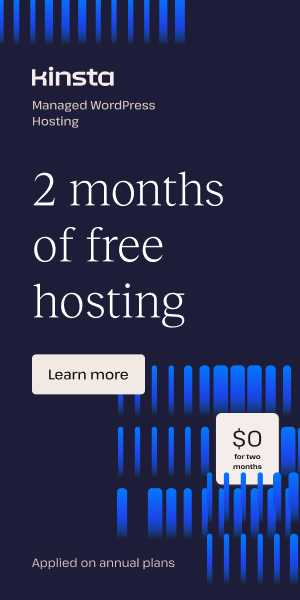Animation Integration: Figma to WordPress
Understanding the Challenges of Animation Integration from Figma to WordPress
Integrating animations created in Figma directly into a WordPress site is a nuanced process that involves translating design interactions into web-friendly formats. Figma offers powerful prototyping and animation capabilities, but these do not automatically translate into WordPress without careful handling, especially when aiming for smooth wordpress interactions and fluid dynamic experiences.
Animations in Figma can be triggered by user actions like hover and click, transition smoothly with easing options, and add significant interactivity to web designs. However, the main hurdle lies in maintaining these animations’ fidelity during conversion and implementation on WordPress platforms.
Essential Steps for Preserving Figma Animations in WordPress
1. Designing Animations Effectively in Figma
Start by crafting your animations in Figma with an eye toward web adaptability. Focus on defining triggers for interactions (hover, click, etc.), timing, and easing curves to create intuitive user experiences. Use Figma’s prototyping features to preview how animations function in practice.
2. Exporting Animations in Optimal Web Formats
There are three main export formats that facilitate the transition:
- Lottie/JSON: Best for complex interactive animations. Export your animations as JSON files using plugins like LottieFiles.
- SVG: Suitable for simpler, scalable vector animations; with SVG Support plugins available for WordPress, this is a lightweight choice.
- CSS Keyframes/JavaScript: When animations rely on transformations and transitions, manual coding in CSS or JavaScript is often required within the WordPress theme.
3. Implementing on WordPress with Plugins and Code
Depending on your export format, select the appropriate integration method:
- Lottie Animations: Use the LottieFiles WordPress Plugin to upload and embed animations efficiently via blocks or shortcodes.
- SVG Animations: Use the SVG Support plugin to upload and display SVGs safely. Enhance with custom CSS or JavaScript for interactivity.
- CSS/JavaScript: Add your animation code manually through WordPress customizers or child theme files. This allows for full control but requires front-end expertise.
By following these steps, you ensure smoother dynamic design conversion from static Figma layouts to interactive WordPress sites with preserved animations.
Leveraging the Web Animations API for Advanced Interactions
Why Use the Web Animations API?
The Web Animations API is a modern standard for fine-tuning animations directly through code, offering superior control and performance over traditional CSS animations. When converting Figma designs, this API enables faithful reproduction of complex movements and user-driven interactions.
Implementing Web Animations API in WordPress
For those comfortable with JavaScript, custom code can be added to WordPress either via theme files or plugins like Custom JavaScript. Example code might animate slide-in effects or fades consistent with your Figma prototype:
<script>
const element = document.querySelector('.animate-me');
const animation = element.animate([
{ transform: 'translateX(0px)' },
{ transform: 'translateX(100px)' }
], {
duration: 2000,
fill: 'forwards'
});
animation.play();
</script>
This hands-on method can replicate nuanced wordpress interactions exactly as envisioned during design, although it requires JavaScript proficiency to maintain and scale effectively.
Practical Tools and Plugins to Ease the Conversion
For users seeking a blend of ease and functionality, plugins like the Animation and Design Converter for Gutenberg Block provide ready-made solutions for importing Figma designs including animations directly into the Gutenberg editor. This approach allows users with minimal coding ability to:
- Import designs using a Figma page access token and URL.
- Automatically convert designs into WordPress blocks with built-in animation types (fade, slide, parallax).
- Customize and preview animations within the WordPress block editor.
This plugin supports maintaining visual fidelity while adding dynamic interaction, streamlining the figma animations wp workflow for designers and developers alike.
Case Study: Implementing Complex Animation Workflows with Figma2WP Service
Figma2WP Service, catering to clients across the USA, UK, and Canada, specializes in translating intricate Figma animations into fully functional WordPress sites. Their approach combines automated tools with hands-on coding, ensuring:
- Responsive layouts using Figma’s Auto Layout features for flawless mobile compatibility.
- Use of the Web Animations API to replicate sophisticated user-triggered effects seamlessly.
- Custom plugin integrations for animation formats like Lottie and SVG.
- Thorough testing across browsers to maintain consistency of animations and wordpress interactions.
For example, a recent ecommerce client saw a 40% increase in user engagement due to the addition of micro-animations imported and fine-tuned through Figma2WP’s process, highlighting the value of professional animation integration.
Best Practices for Smooth Dynamic Design Conversion
- Plan Animations Early: Build animations into your Figma design from the outset, considering how they will translate to web technologies.
- Keep It Lightweight: Prioritize vector formats and CSS-based effects to optimize site speed.
- Use Plugins Wisely: Select reputable, regularly updated plugins like LottieFiles or Animation and Design Converter for Gutenberg Block.
- Test Across Devices: Ensure animations degrade gracefully on unsupported browsers and adapt to different screen sizes.
- Document Animation Triggers: Clear definitions of user interactions facilitate correct implementation in WordPress.
Additional Resources for Animation Integration
Explore the following platforms and tools to deepen your knowledge and capability:
- LottieFiles — Animation export and integration platform
- CSS-Tricks — Tips on CSS animations and keyframes
- MDN Web Docs on Web Animations API
- SVG Support WordPress Plugin
- Gutenberg Animation and Design Converter Plugin
- Figma official design platform
These resources provide not only plugins but also deep technical insights helpful for both beginners and seasoned developers tackling animation workflows.
Turning Ideas into Interactive Websites
Animation integration from Figma to WordPress bridges the gap between static design and dynamic web experience. By selecting the right tools and adhering to best practices, designers and developers can ensure that beautiful animated concepts become fully functioning realities on the web.
If you want expert assistance to convert your Figma animations into seamless WordPress interactivity, feel free to Contact Us at Figma2WP Service. Our seasoned team is ready to help you unlock your site’s full creative potential.
More From Our Blog
Elevating Your Online Presence Through Engaging Social Design and Community WP Building a vibrant community WP (WordPress) site is increasingly crucial in the digital age for brands aiming to foster trust, loyalty, and dynamic interaction among their customers. By integrating Figma2WP Service solutions, businesses can transform precise figma social design prototypes into powerful WordPress-based discussion Read more…
Designing Engaging Virtual Events with Figma Templates Virtual sessions and webinars have become central to business, education, and community engagement worldwide. As organizations seek smoother, more professional ways to host online events, leveraging powerful design tools like Figma can elevate every aspect of your webinar—from invitation to follow-up. Whether you are building your webinar landing Read more…


